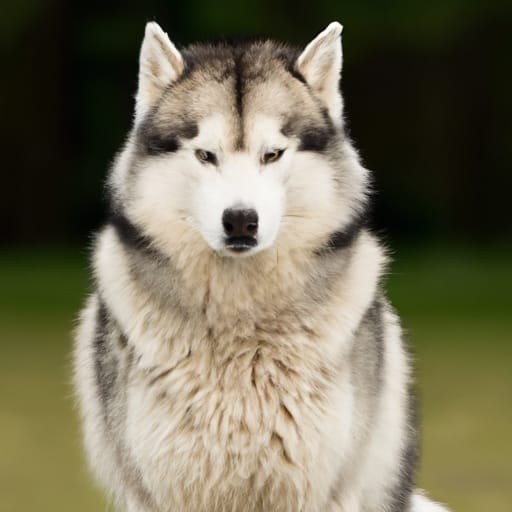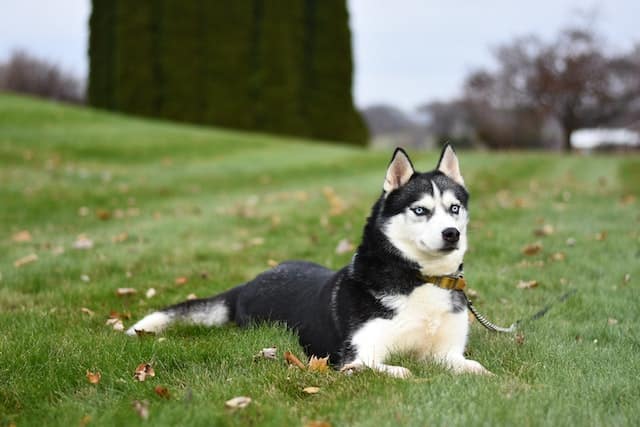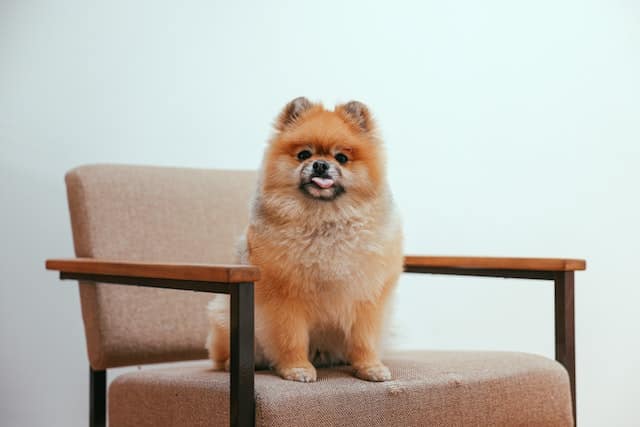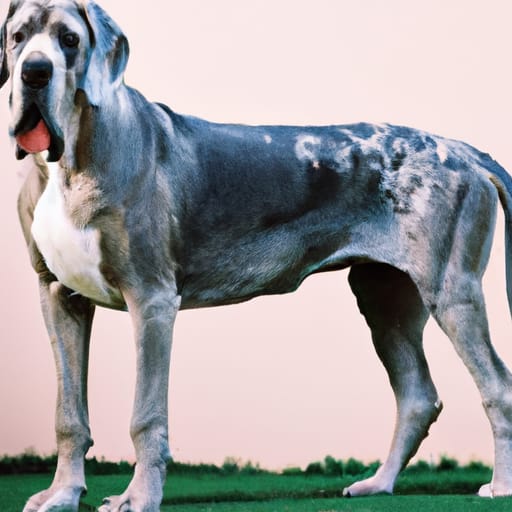Husky Shedding: Why Do Huskies Shed?
Are you constantly finding clumps of fur all over your house? Does your beautiful Husky leave behind a trail of hair wherever it goes? If so, you’re not alone. Huskies are known for their gorgeous double coat, but with it comes a whole lot of shedding. In this article, we’ll explore the fascinating reasons behind why Huskies shed so much and discover some helpful tips on how to manage it. Say goodbye to hair-covered furniture and hello to a cleaner home!

Husky Shedding
Heredity and Genetics
Huskies are known for their thick double coats, which naturally make them prone to shedding. The shedding patterns and intensity can be influenced by heredity and genetics. The role of ancestry is crucial in understanding the shedding behavior of huskies. These dogs were originally bred as sled dogs in cold climates, and their shedding tendencies were essential for survival in those harsh conditions.
Adaptation to Cold Climate
One of the main reasons why huskies shed is their adaptation to cold weather. Their double coat structure provides insulation and protection from the extreme cold. The top layer, known as the guard hairs, helps to repel moisture and prevent the cold air from directly reaching the skin. The undercoat, on the other hand, provides insulation by trapping air close to the body, keeping the husky warm. Shedding allows the husky to adjust its coat thickness according to the temperature, ensuring optimal comfort in a cold climate.
Double Coat Structure
The double coat of a husky consists of two layers – the guard hairs and the undercoat. The guard hairs are long and coarse, while the undercoat is dense and soft. The combination of these two layers provides the husky with excellent insulation and protection. The undercoat acts as a barrier against the cold, while the guard hairs repel moisture and provide an additional layer of protection. The double coat also helps to protect the skin from harmful UV rays and insects.
Heredity and Genetics
The Role of Ancestry
Huskies have a long lineage that traces back to their ancestors, who lived in cold climates. These ancestors had thick coats that helped them survive in freezing temperatures. The hereditary traits of shedding have been passed down through generations, making huskies predisposed to shed their fur regularly. Understanding the role of ancestry is essential in comprehending why huskies shed.
Breed Characteristics
The breed characteristics of huskies play a significant role in their shedding tendencies. Huskies are considered a working breed, specifically bred for endurance and strength. Their double coat allows them to withstand the extreme cold temperatures they were originally exposed to. While shedding can be a challenge for husky owners, it is important to remember that it is a natural characteristic of the breed.
Variations in Shedding
Shedding patterns can vary between individual huskies due to a variety of factors, including genetics, health, and environmental conditions. Some huskies may shed more heavily during certain seasons, while others may have a more consistent shedding pattern throughout the year. It is essential to monitor your husky’s shedding patterns to understand what is normal for them and to identify any potential underlying issues.
Adaptation to Cold Climate
Maintaining Body Temperature
Huskies have adapted to maintain their body temperature in extremely cold climates. Shedding is a natural mechanism that allows huskies to regulate their body temperature. As the weather gets warmer, huskies shed their dense undercoat to prevent overheating. Conversely, during colder months, huskies grow a thicker undercoat to protect themselves from the cold. This adaptation ensures that huskies can maintain a comfortable body temperature regardless of the external conditions.
Cooling Mechanism
Shedding also acts as a cooling mechanism for huskies. By shedding their undercoat, huskies allow for better airflow through their fur, which helps to dissipate heat more effectively. This is especially important in warmer climates or if the husky is engaged in strenuous physical activity. Shedding allows the husky’s body to regulate its temperature and prevent overheating.
Seasonal Variation
Huskies typically experience more significant shedding during seasonal transitions. As the weather changes from winter to spring and summer, huskies shed their thick winter coats to prepare for warmer temperatures. This shedding process, often referred to as “blowing their coat,” can result in large amounts of fur being shed over a relatively short period of time. It is important to be prepared for this seasonal shedding and to provide regular grooming to help manage the shedding process.
Double Coat Structure
Guard Hairs and Undercoat
The double coat of a husky consists of two distinct layers – the guard hairs and the undercoat. The guard hairs are long, coarse, and waterproof, protecting the husky’s skin from moisture and environmental elements. The undercoat is a dense layer of soft fur that provides insulation and helps regulate body temperature. The combination of these two layers creates a comprehensive protection system for the husky, ensuring its comfort and well-being in various weather conditions.
Insulation and Protection
The double coat of a husky plays a crucial role in insulating the dog’s body. The undercoat acts as a layer of insulation, trapping air close to the skin and maintaining body heat. This insulation is effective in both cold and warm weather, as it works to keep the husky warm in colder temperatures and prevents overheating in warmer weather. The guard hairs provide an additional layer of protection by repelling moisture and shielding the skin from UV rays and insects.
The Shedding Cycle
The shedding cycle of a husky is a natural process that allows the dog to adjust its coat according to the changing seasons. Huskies typically shed their undercoat twice a year, known as “blowing their coat.” This shedding phase usually occurs in the spring and fall when the husky’s body is preparing for the change in temperature. During this time, huskies shed massive amounts of fur to make way for a new undercoat, which is either thicker or thinner, depending on the weather conditions.
Grooming and Maintenance
Regular Brushing
Regular brushing is essential for managing husky shedding. Brushing helps to remove loose fur and prevent it from accumulating in the home. It also stimulates the skin and promotes healthy hair growth. For huskies, a slicker brush or undercoat rake is recommended to effectively remove loose undercoat and prevent matting. Brushing should be done at least two to three times a week, but during shedding seasons, daily brushing may be necessary to keep the fur under control.
Bathing and Shampooing
Bathing huskies should be done on an as-needed basis to keep their coats clean and free from dirt and debris. It is important to use a gentle, hypoallergenic shampoo that won’t strip the natural oils from their fur. Over-bathing can lead to skin dryness and irritation, which may exacerbate shedding. It is recommended to consult with a veterinarian to determine the appropriate bathing frequency and products for your husky.
Supplements for Coat Health
Supplements can play a role in maintaining a healthy coat and reducing excessive shedding. Omega-3 fatty acids, such as fish oil, are known to promote coat health and reduce inflammation in the skin. Adding these supplements to your husky’s diet can help improve the condition of their fur and minimize shedding. However, it is always best to consult with a veterinarian before adding any supplements to your husky’s diet.
Reducing Shedding
Proper Nutrition
Proper nutrition is essential for maintaining a healthy coat and minimizing shedding. A well-balanced diet that includes high-quality proteins, omega-3 fatty acids, and essential vitamins and minerals can improve the overall condition of your husky’s coat. Consult with a veterinarian to determine the best diet for your husky based on their age, activity level, and specific nutritional needs.
Hydration and Water Intake
Adequate hydration is crucial for your husky’s overall health and coat condition. Ensuring that your husky has access to clean and fresh water at all times can help prevent dry skin and excessive shedding. Proper hydration supports optimal coat health and can help reduce shedding caused by skin dryness.
Regular Exercise
Regular exercise is not only essential for your husky’s physical health but also for maintaining a healthy coat. Regular physical activity improves blood circulation, which promotes healthy skin and coat condition. Engaging your husky in active play, running, or other forms of exercise can help minimize shedding and keep their coat in top shape.

Dealing with Excessive Shedding
Identifying Underlying Issues
If your husky is shedding excessively or there are changes in their shedding patterns, it is important to identify any underlying issues that may be causing the excessive shedding. Factors such as poor nutrition, allergies, parasites, or hormonal imbalances can contribute to increased shedding. Consult with a veterinarian to determine the cause of the excessive shedding and develop a suitable treatment plan.
Consulting a Veterinarian
If you are concerned about your husky’s shedding or need assistance in managing it, consulting with a veterinarian is highly recommended. A veterinarian can provide guidance on grooming techniques, dietary adjustments, and potential health issues that may be contributing to excessive shedding. They can also address any specific concerns you may have and offer tailored advice for your husky’s shedding needs.
Professional Grooming Services
Enlisting the help of professional groomers can be beneficial in managing husky shedding. Professional groomers have the experience and expertise to handle husky coats and can provide effective deshedding techniques. They may use specialized tools and grooming products that can help reduce shedding and keep your husky’s coat in optimal condition.
Tips for Managing Husky Shedding
Using a Deshedding Tool
Investing in a deshedding tool specifically designed for huskies can be a game-changer in managing shedding. These tools are designed to remove loose undercoat without damaging the topcoat. Regular use of a deshedding tool can significantly reduce shedding and keep your husky’s coat healthy and clean.
Minimizing Shedding in the Home
To minimize the amount of fur shed in your home, there are a few strategies you can implement. Regular vacuuming and sweeping can help remove loose fur from floors and furniture. Using washable covers for furniture and bedding can also make it easier to remove fur. Additionally, providing your husky with designated areas, such as a dog bed or a specific room, can help contain the shed fur and minimize its spread throughout the house.
Maintaining a Clean Environment
Maintaining a clean environment is essential for managing husky shedding. Regularly washing and cleaning your husky’s bedding, toys, and other accessories can help remove shed fur and prevent the accumulation of allergens. Keeping your home clean and free from dust and pollen can also help reduce allergens that may contribute to shedding-related allergies.

Controlling Allergies and Dander
Air Purifiers and Filters
Using air purifiers and filters in your home can help reduce allergens and dander in the air, providing relief for allergy sufferers. These devices work to capture and trap airborne particles, including pet dander, which can help minimize allergy symptoms and shed fur in the environment.
Reducing Dust and Pollen
Regular dusting and cleaning can help reduce dust and pollen in your home, which can contribute to shedding-related allergies. Using cleaning products that are suitable for people with allergies and regularly changing air filters can further reduce allergens in the environment. It is important to create an environment that is as allergen-free as possible to minimize the impact on both you and your husky.
Creating Allergy-Free Zones
Creating designated allergy-free zones in your home can provide relief for allergy sufferers. Designating certain areas where your husky is not allowed, such as bedrooms or living rooms, can help minimize exposure to shedding-related allergens. This can be particularly helpful if you or a family member suffers from severe allergies or asthma.
Bonding and Connection Through Grooming
Creating Positive Experiences
Grooming can be a wonderful opportunity to bond with your husky and strengthen your connection. By creating positive experiences during grooming sessions, such as using treats, gentle touch, and praise, you can make grooming a pleasant and enjoyable time for both you and your husky. This positive reinforcement can help build trust and strengthen your bond as you work together to manage shedding.
Strengthening the Human-Animal Bond
Grooming can be an intimate and nurturing experience that deepens the bond between you and your husky. Regular grooming sessions provide an opportunity for quality time, physical closeness, and gentle touch, all of which contribute to a stronger human-animal bond. Embrace the grooming process as a chance to connect with your husky on a deeper level and show them love and care.
Understanding Your Husky’s Needs
By regularly grooming your husky and paying attention to their shedding patterns, you will gain a better understanding of their specific needs. Every husky is unique, and their shedding patterns may vary based on genetics, health, and environmental factors. By observing and understanding your husky’s shedding patterns, you can better cater to their specific needs and provide them with the care and maintenance they require.
In conclusion, huskies shed due to their heredity and genetic predisposition, their adaptation to cold climates, and the structure of their double coat. Understanding these factors and implementing proper grooming and maintenance techniques can help manage and minimize shedding. By embracing the shedding process, bonding through grooming, and creating a clean and allergy-free environment, you can ensure the health and well-being of your husky while strengthening your connection with them.










